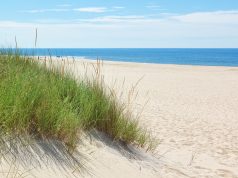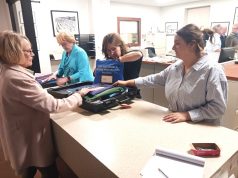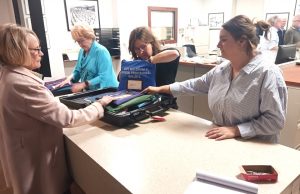True to their motto that “it’s fun to search and a joy to find,” a local group dedicated to historic preservation donated a rare artifact to Ocean City’s historic Life Saving Station on Monday.
The Richard Somers Chapter (1148) of the Questers gave the nonprofit organization $1,000 to purchase a cut block.
The piece of equipment was vital in an era when the U.S. Life Saving Service used Lyle guns to shoot rescue lines to ships foundering in the surf. After sailors were ferried to shore, the cut block was threaded onto a line and run out to the ship, where a retractable blade was activated, cutting and freeing the ropes to be retrieved and used again.
U.S. Life Saving Station 30 operated in Ocean City from 1885 to 1915. Ocean City purchased the building (at Fourth Street and Atlantic Avenue) in 2010 to save it from demolition, and a nonprofit group is working to create a living maritime museum there.
Questers Chapter President Carol Dotts, Vice President Sue Glazier, Historian Suzanne Hampton and Treasurer Pat Crowley joined U.S. Life Saving Station 30 Chairman John Loeper at the Northwood Inn Bed & Breakfast, where Loeper is innkeeper, on Monday to celebrate the acquisition.
The Questers were founded in 1944 in Fort Washington, Pa., and the local chapter has 24 members. They sponsor study groups to learn about history through preservation and restoration, and they fund a scholarship each year for a Columbia University masters program dedicated to the study of the same.
The Questers used money raised from a card party to help Loeper purchase the cut block, which he had located on a website dedicated to Life Saving Service antiques.
The group hopes to use a matching grant next year to help the historic Life Saving Station start on construction of a surf boat, a replica of the 26-foot wooden rowboats used in Ocean City.
Stations up and down the coast were positioned not only to rescue ships and sailors in distress but to serve as places of shelter and medical clinics on shorelines that were often sparsely inhabited and remote.





